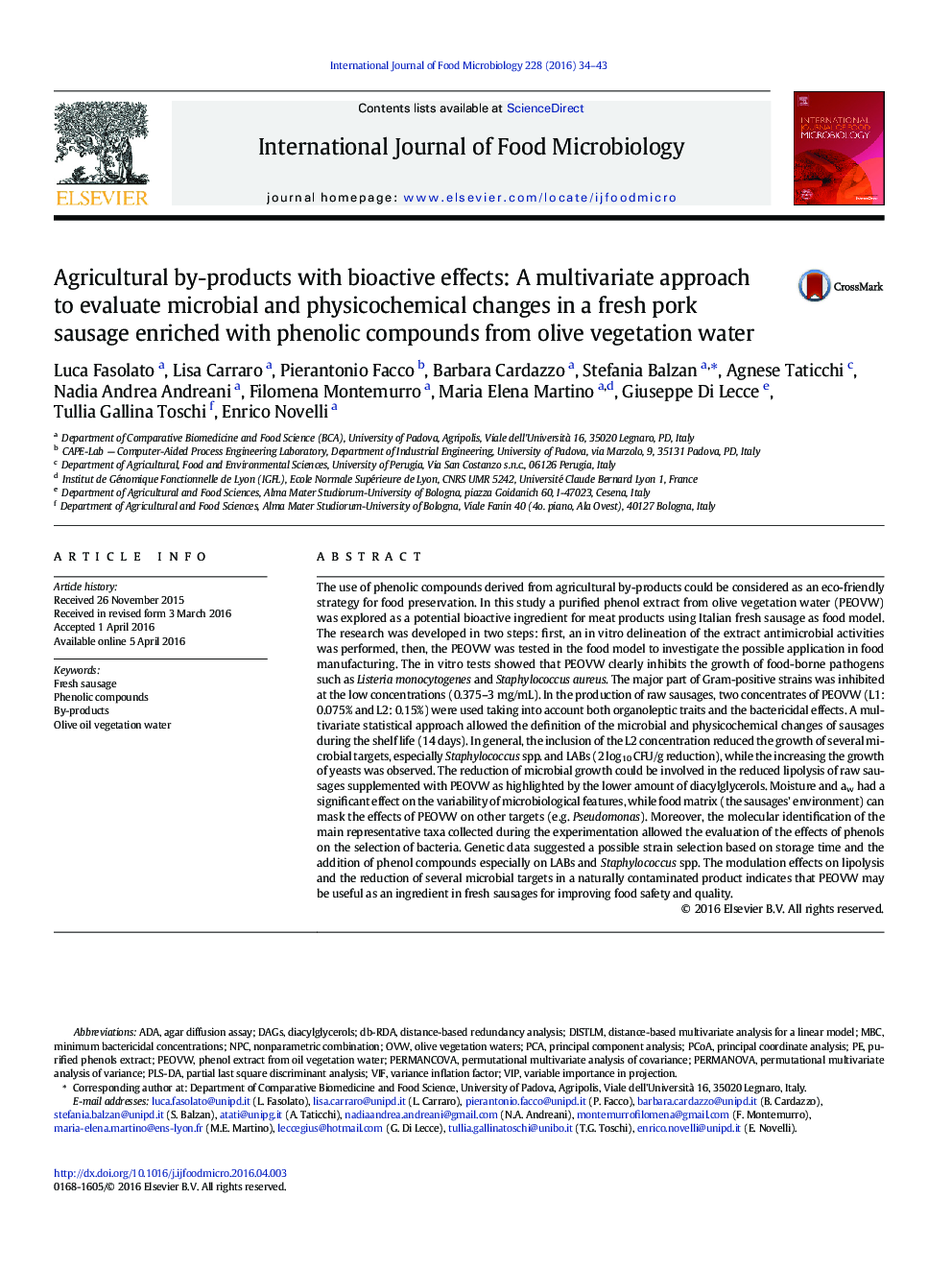| کد مقاله | کد نشریه | سال انتشار | مقاله انگلیسی | نسخه تمام متن |
|---|---|---|---|---|
| 4366267 | 1616555 | 2016 | 10 صفحه PDF | دانلود رایگان |
• Phenolic compounds from olive vegetation water (PEOVW) showed bactericidal effects.
• PEOVW was effective in in vitro tests and in fresh sausages against Gram + bacteria.
• An integrated statistical approach discovered food matrix interactions.
• PEOVW showed a modulation effect on lipolysis.
• Findings suggest PEOVW as preserving ingredient.
The use of phenolic compounds derived from agricultural by-products could be considered as an eco-friendly strategy for food preservation. In this study a purified phenol extract from olive vegetation water (PEOVW) was explored as a potential bioactive ingredient for meat products using Italian fresh sausage as food model. The research was developed in two steps: first, an in vitro delineation of the extract antimicrobial activities was performed, then, the PEOVW was tested in the food model to investigate the possible application in food manufacturing. The in vitro tests showed that PEOVW clearly inhibits the growth of food-borne pathogens such as Listeria monocytogenes and Staphylococcus aureus. The major part of Gram-positive strains was inhibited at the low concentrations (0.375–3 mg/mL). In the production of raw sausages, two concentrates of PEOVW (L1: 0.075% and L2: 0.15%) were used taking into account both organoleptic traits and the bactericidal effects. A multivariate statistical approach allowed the definition of the microbial and physicochemical changes of sausages during the shelf life (14 days). In general, the inclusion of the L2 concentration reduced the growth of several microbial targets, especially Staphylococcus spp. and LABs (2 log10 CFU/g reduction), while the increasing the growth of yeasts was observed. The reduction of microbial growth could be involved in the reduced lipolysis of raw sausages supplemented with PEOVW as highlighted by the lower amount of diacylglycerols. Moisture and aw had a significant effect on the variability of microbiological features, while food matrix (the sausages' environment) can mask the effects of PEOVW on other targets (e.g. Pseudomonas). Moreover, the molecular identification of the main representative taxa collected during the experimentation allowed the evaluation of the effects of phenols on the selection of bacteria. Genetic data suggested a possible strain selection based on storage time and the addition of phenol compounds especially on LABs and Staphylococcus spp. The modulation effects on lipolysis and the reduction of several microbial targets in a naturally contaminated product indicates that PEOVW may be useful as an ingredient in fresh sausages for improving food safety and quality.
Journal: International Journal of Food Microbiology - Volume 228, 2 July 2016, Pages 34–43
